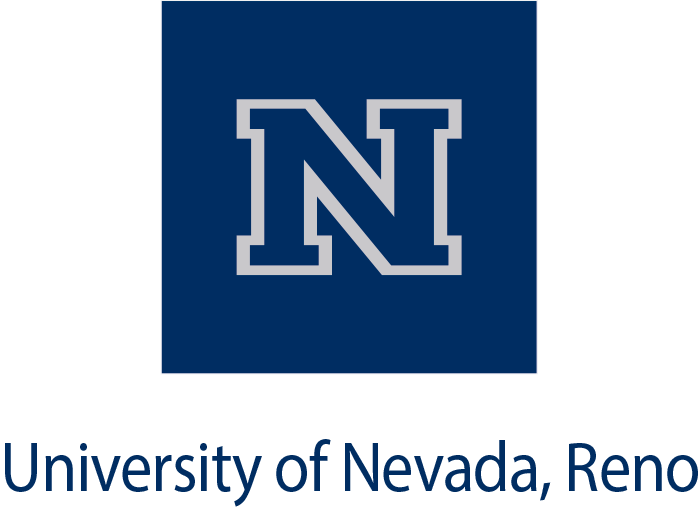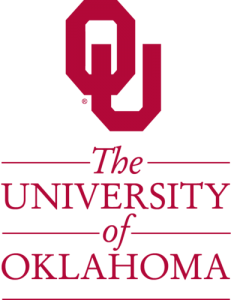The ABC-UTC has assembled an experienced, knowledgeable, and engaged group of bridge academics and engineers who will collectively provide the transportation industry with the tools needed to effectively and economically utilize the principles of ABC to enhance mobility and safety, and produce safe, environmentally friendly, long-lasting bridges.
The ABC-UTC consortium members have well-established, working relationships with one another that span decades. Collectively, the consortium has the expertise and synergy to accomplish the Center’s objectives. The ABC-UTC’s research team is particularly well-suited to solving the remaining barriers to widespread implementation of ABC practices and construction of longer service-life bridges. The Center’s Director, Dr. Atorod Azizinamini of Florida International University (FIU), is an internationally recognized expert in ABC and bridge design. The University of Nevada, Reno and the University of Washington both have nationally and internationally recognized programs in earthquake and structural engineering; Iowa State has long been nationally recognized for its bridge engineering program, which emphasizes ABC, and the University of Oklahoma is one of the nation’s leaders in geotechnical engineering research with a specific emphasis on bridge engineering. Further, the research team includes Mary Lou Ralls, former State Bridge Engineer of Texas and currently an affiliate of the Civil and Environmental Engineering Department at FIU. Mrs. Ralls, as Director of Technology Transfer, will ensure an effective and timely implementation of the results developed by the ABC-UTC.
Florida International University
![]() Florida International University (FIU) is a public research university in Miami, Florida. With a student body of nearly 50,000, FIU serves a large number of economically disadvantaged students. Nearly 50 percent of all undergraduate students at FIU receive financial aid, and nearly 60 percent of those recipients come from families with annual household incomes under $30,000.
Florida International University (FIU) is a public research university in Miami, Florida. With a student body of nearly 50,000, FIU serves a large number of economically disadvantaged students. Nearly 50 percent of all undergraduate students at FIU receive financial aid, and nearly 60 percent of those recipients come from families with annual household incomes under $30,000.
FIU is a member of Hispanic Serving Institutions, defined by the Hispanic Association of Colleges and Universities as “colleges, universities, or systems/districts where total Hispanic enrollment constitutes a minimum of 25 percent of the total enrollment.” FIU is the largest producer of Hispanic engineers in the continental United States. The Titan America Structures and Construction Testing Laboratory is one of the largest full-scale testing facilities in the State of Florida, with a total area of 6,375 ft2 of floor space.
University of Nevada-Reno
 University of Nevada-Reno (UNR) houses some of the most advanced facilities for structural/seismic testing in the country. The James E. Rogers and Louis Wiener Large-Scale Structures Laboratory is equipped with four shake tables. This lab received the 2007 Best Experimental Site Innovation Award from the NEES Consortium in recognition of its expertise and innovation in experimental simulation.
University of Nevada-Reno (UNR) houses some of the most advanced facilities for structural/seismic testing in the country. The James E. Rogers and Louis Wiener Large-Scale Structures Laboratory is equipped with four shake tables. This lab received the 2007 Best Experimental Site Innovation Award from the NEES Consortium in recognition of its expertise and innovation in experimental simulation.
Iowa State University
 At Iowa State University (ISU), the Bridge Engineering Center (BEC) was established in 1986, with the mission to provide cost-effective bridge engineering solutions to bridge owners at the federal, state, and local levels. The BEC is housed within the Institute for Transportation (InTrans). ISU is also home to two world-class structural engineering research laboratories. The BEC manages several million dollars of bridge research per year. The BEC employs four full-time staff, several part-time staff, and seven ISU faculties who manage and perform bridge related research projects along with approximately 15-20 M.S. and Ph.D. graduate students. It is noteworthy that the BEC has field tested over 300 bridges in the past 15 years in Pennsylvania, New York, North Carolina, Alabama, Florida, Texas, Wisconsin, Iowa, Montana, Oregon, and Washington.
At Iowa State University (ISU), the Bridge Engineering Center (BEC) was established in 1986, with the mission to provide cost-effective bridge engineering solutions to bridge owners at the federal, state, and local levels. The BEC is housed within the Institute for Transportation (InTrans). ISU is also home to two world-class structural engineering research laboratories. The BEC manages several million dollars of bridge research per year. The BEC employs four full-time staff, several part-time staff, and seven ISU faculties who manage and perform bridge related research projects along with approximately 15-20 M.S. and Ph.D. graduate students. It is noteworthy that the BEC has field tested over 300 bridges in the past 15 years in Pennsylvania, New York, North Carolina, Alabama, Florida, Texas, Wisconsin, Iowa, Montana, Oregon, and Washington.
University of Washington
 The UW is one of the world’s preeminent public universities, and is ranked No. 13 in the world on the 2017 Academic Ranking of World Universities and No. 10 by US News and World Report. It boasts seven Nobel Prize winners, 15 MacArthur Fellows, 175 members of the National Academies of Sciences, Engineering & Medicine and 181 fellows in the American Association for the Advancement of Science. It receives more federal research dollars than any other public university in the nation. The UW educates more than 55,000 students annually at its three campuses (Seattle, Tacoma and Bothell). 82% of those students attend the Seattle campus, which is home to the Civil Engineering Department. About 70% of the total are undergraduates, and 30% are graduate and professional. Of the undergraduates, approximately three quarters are residents of the state, and 35% of them represent the first of their families ever to receive a college degree. Nearly one quarter of the incoming 2017 domestic freshman class was comprised of minorities. The Structural Engineering Laboratory in the Civil Engineering Department has an extensive strong floor, a strong wall, a one-dimensional earthquake shaking table, and a wide variety of test equipment with capacities up to 2.4 million pounds in addition to several unique pieces of specialized, custom-built equipment. It constitutes the preeminent research laboratory in the Pacific Northwest, and provides service to industry as well.
The UW is one of the world’s preeminent public universities, and is ranked No. 13 in the world on the 2017 Academic Ranking of World Universities and No. 10 by US News and World Report. It boasts seven Nobel Prize winners, 15 MacArthur Fellows, 175 members of the National Academies of Sciences, Engineering & Medicine and 181 fellows in the American Association for the Advancement of Science. It receives more federal research dollars than any other public university in the nation. The UW educates more than 55,000 students annually at its three campuses (Seattle, Tacoma and Bothell). 82% of those students attend the Seattle campus, which is home to the Civil Engineering Department. About 70% of the total are undergraduates, and 30% are graduate and professional. Of the undergraduates, approximately three quarters are residents of the state, and 35% of them represent the first of their families ever to receive a college degree. Nearly one quarter of the incoming 2017 domestic freshman class was comprised of minorities. The Structural Engineering Laboratory in the Civil Engineering Department has an extensive strong floor, a strong wall, a one-dimensional earthquake shaking table, and a wide variety of test equipment with capacities up to 2.4 million pounds in addition to several unique pieces of specialized, custom-built equipment. It constitutes the preeminent research laboratory in the Pacific Northwest, and provides service to industry as well.
University of Oklahoma
 With more than 31,000 students enrolled, the University of Oklahoma (OU) is a comprehensive university offering 152 baccalaureate programs, 160 master’s programs, and 75 doctorate programs. The school is ranked first among public universities in enrollment of National Merit Scholars and among the top ten in the graduation of Rhodes Scholars. For the second year in a row, OU was a recipient of the 2017 Higher Education Excellence in Diversity (HEED) Award, the only national award honoring individual colleges or universities for their outstanding commitment to diversity and inclusion across their campuses. The HEED Award measures an institution’s level of achievement and intensity of commitment in regard to broadening diversity and inclusion on campus through initiatives, programs and outreach; student recruitment, retention and completion; and hiring practices for faculty and staff. The Carnegie Foundation classifies OU as a research university with “very high research activity.” The University of Oklahoma houses major facilities for structural engineering research and education. The OU Fears Lab contains a 13,000-square-foot high-bay laboratory space, 1,800-square-foot Advanced Concrete Research Laboratory (ACRL), and 3,500 square feet of office space.
With more than 31,000 students enrolled, the University of Oklahoma (OU) is a comprehensive university offering 152 baccalaureate programs, 160 master’s programs, and 75 doctorate programs. The school is ranked first among public universities in enrollment of National Merit Scholars and among the top ten in the graduation of Rhodes Scholars. For the second year in a row, OU was a recipient of the 2017 Higher Education Excellence in Diversity (HEED) Award, the only national award honoring individual colleges or universities for their outstanding commitment to diversity and inclusion across their campuses. The HEED Award measures an institution’s level of achievement and intensity of commitment in regard to broadening diversity and inclusion on campus through initiatives, programs and outreach; student recruitment, retention and completion; and hiring practices for faculty and staff. The Carnegie Foundation classifies OU as a research university with “very high research activity.” The University of Oklahoma houses major facilities for structural engineering research and education. The OU Fears Lab contains a 13,000-square-foot high-bay laboratory space, 1,800-square-foot Advanced Concrete Research Laboratory (ACRL), and 3,500 square feet of office space.

